20 of the worst snowstorms in US history
Ferocious winter weather
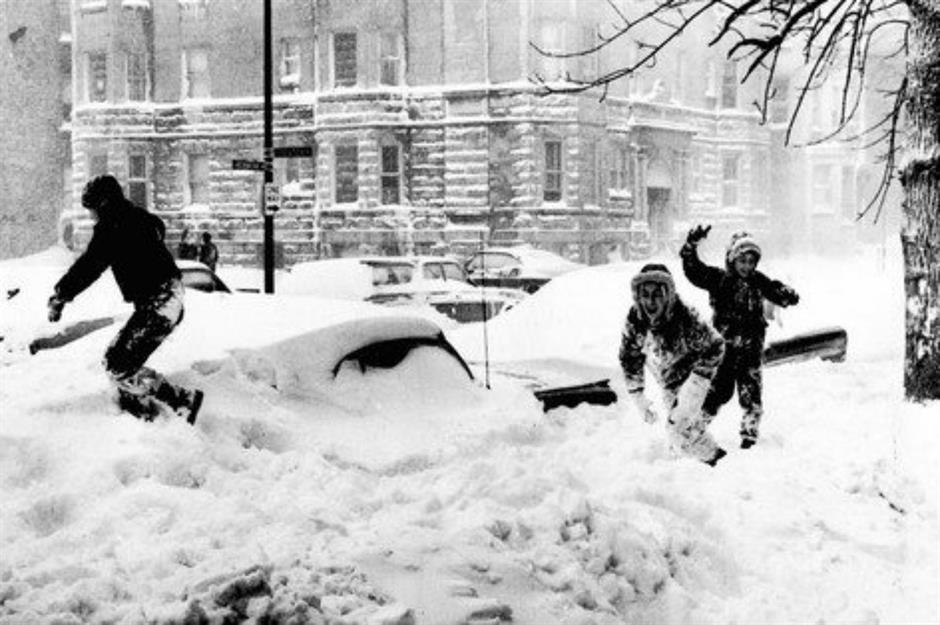
1888: the Great White Hurricane
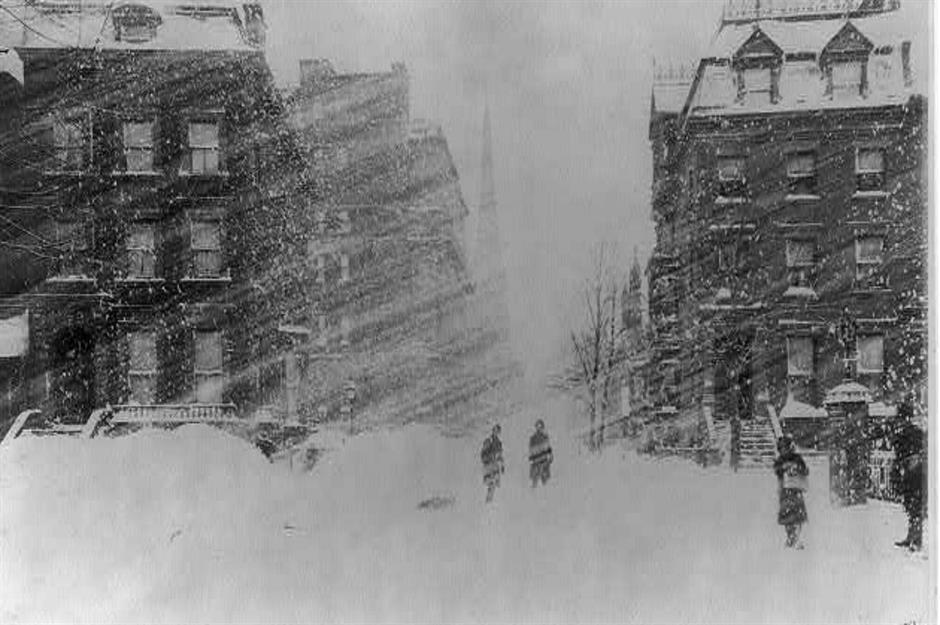
March 1888 saw one of the most severe blizzards in US history. New York and New Jersey were hardest hit, with some parts buried under 3ft 4in (1m) of snow in what became known as the ‘Great White Hurricane’.
1888: the Great White Hurricane
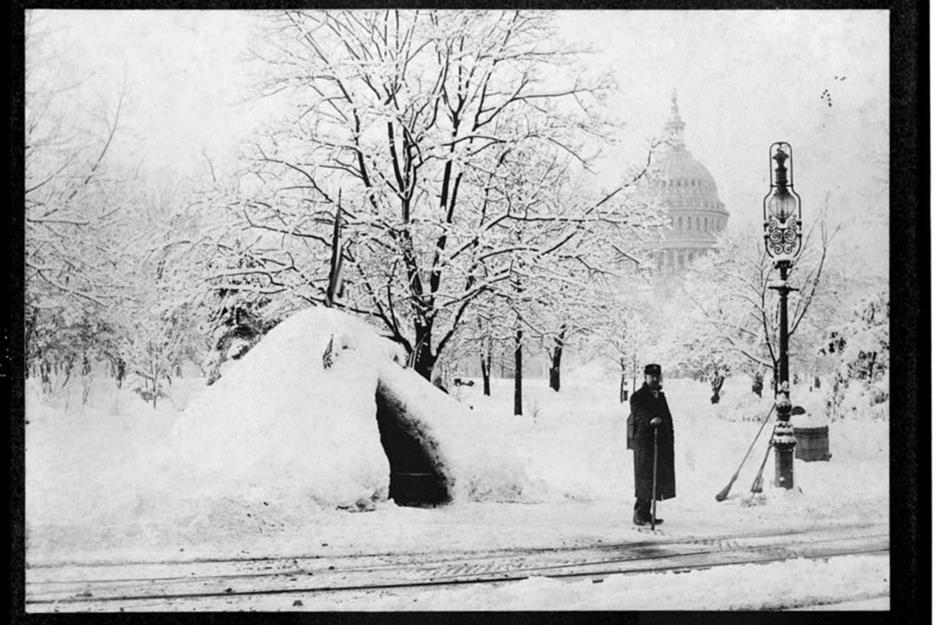
Across 10 states, about a quarter of the population of 19th-century America felt the effects. The snowdrifts brought down telephone lines and buried trains leaving passengers stranded, while fierce winds caused 200 ships to flounder. In total it's believed more than 400 people lost their lives, the worst death toll in US history from a winter storm.
Why snow isn't really white and other mind-blowing weather facts
1899: the Great Arctic Outbreak
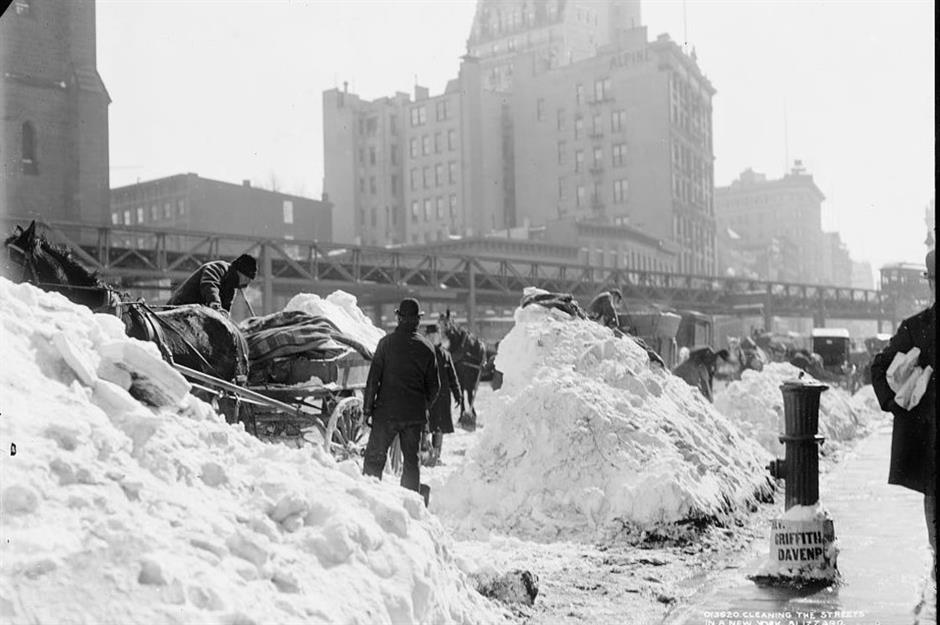
While temperatures across the country were unusually low during the early part of February 1899, it wasn't until the middle of the month that the chill really took hold. Thanks to anticyclones moving in from Canada, the Eastern states and the Midwest were the worst hit by the freezing outbreaks. By 10 February the mercury was sitting at below -28°C (-20°F) in some areas, with parts of New Jersey seeing 1ft 8in (0.7m) of snow.
1899: the Great Arctic Outbreak
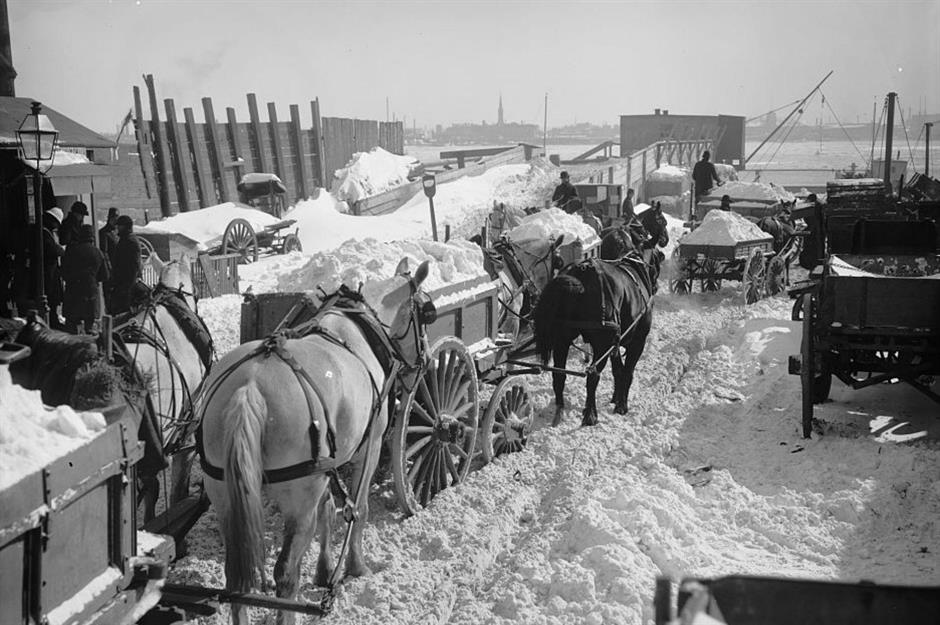
The area around Washington DC experienced 51 hours of straight snowfall, while further south ice flowed from the Mississippi into the Gulf of Mexico and blocked the river's traffic. Crops were destroyed and animals suffered badly too, with at least 100 people losing their lives to the extreme conditions. Captured here is the clean-up operation in New York City, where snow was gathered in horse-drawn carts and dumped into the river.
1913: the Great Lakes storm
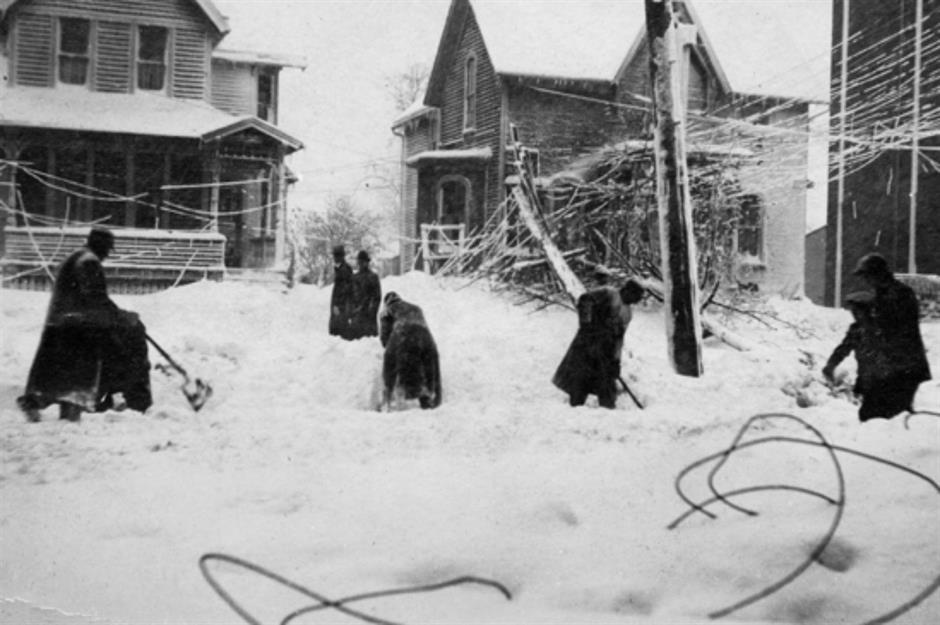
1913: the Great Lakes storm
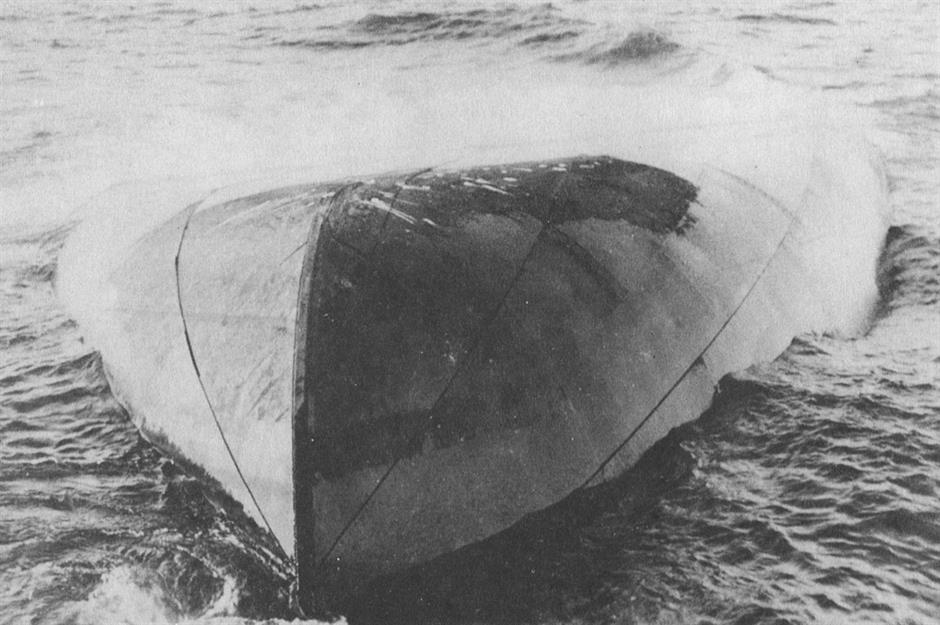
Around 12 ships sank and dozens of others were wrecked, including the Charles S. Price, pictured here, which was thrown upside down near the southern end of Lake Huron. The storm is estimated to have killed up to 300 people – a higher number than all the other major Great Lakes disasters combined.
Follow our Facebook page for more travel and weather inspiration
1922: Knickerbocker Storm
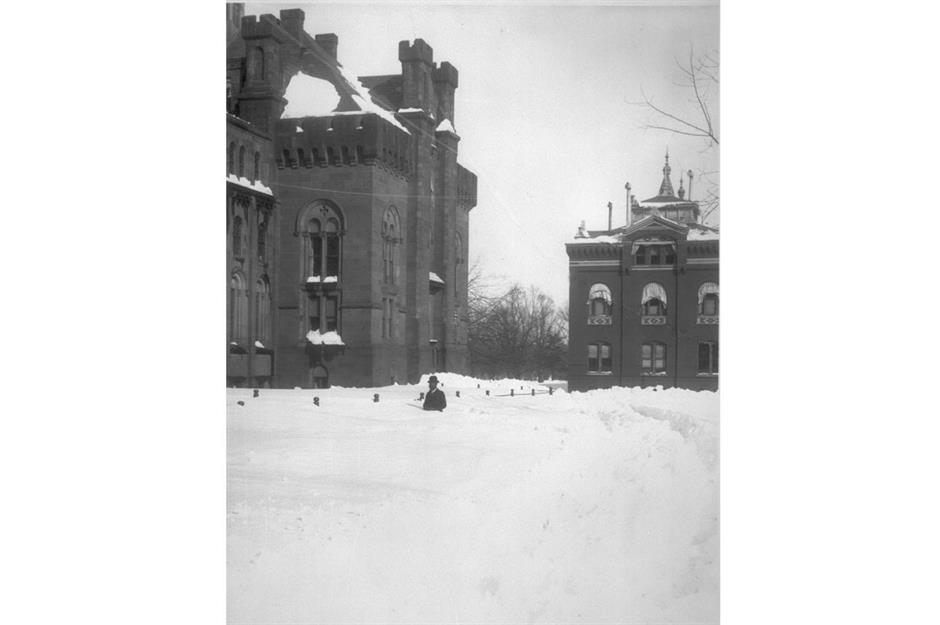
1922: Knickerbocker Storm
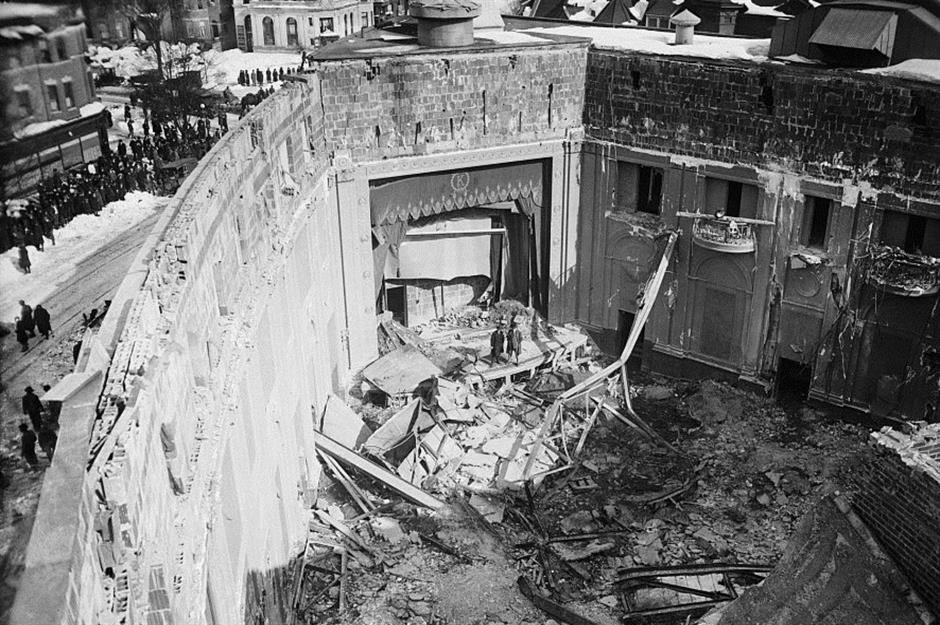
There is a tragic story behind the storm's name. It took on the title after the Knickerbocker Theater in Washington DC, whose roof collapsed under the weight of the snow on Saturday 28 January, with hundreds of movie-goers inside. Wet snow and concrete fell on audience members during an intermission, killing 98 people and injuring 133 more.
1967: Chicago blizzard
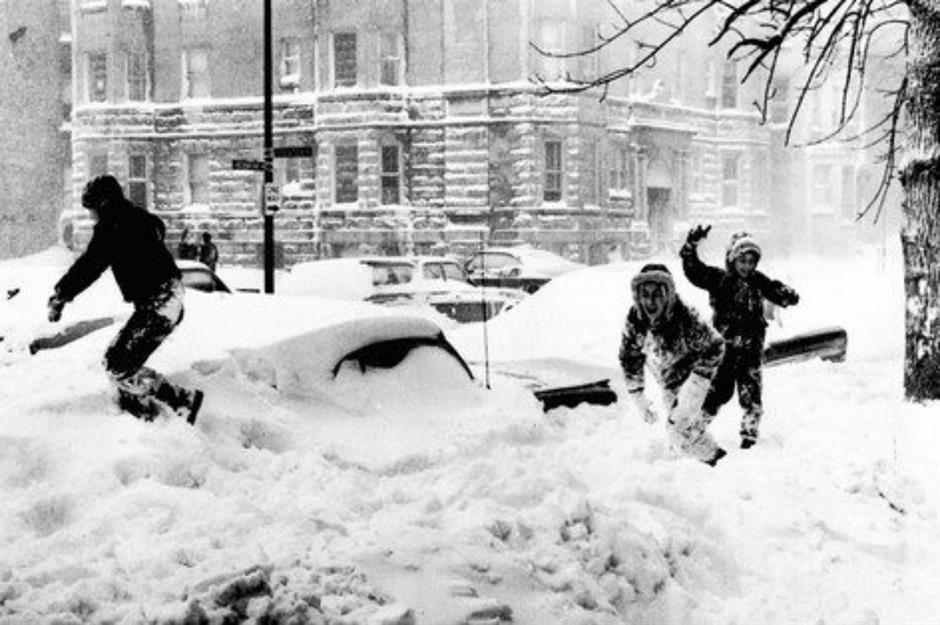
This 1967 snowstorm really caught the Windy city by surprise dropping nearly two feet (0.6m) of snow on Chicago on 26-27 January – despite only a few inches being predicted to fall.
1967: Chicago blizzard
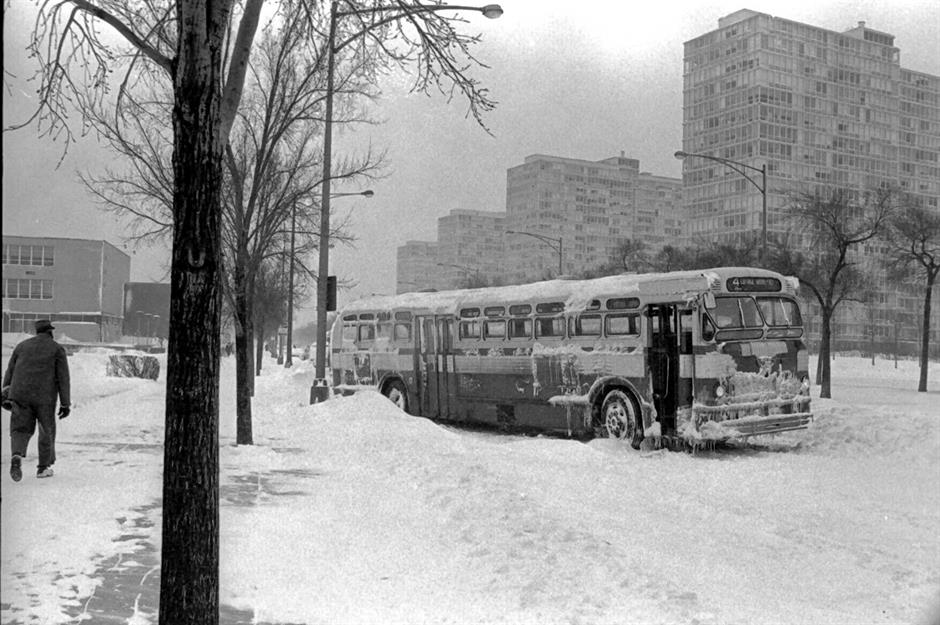
1993: Storm of the century
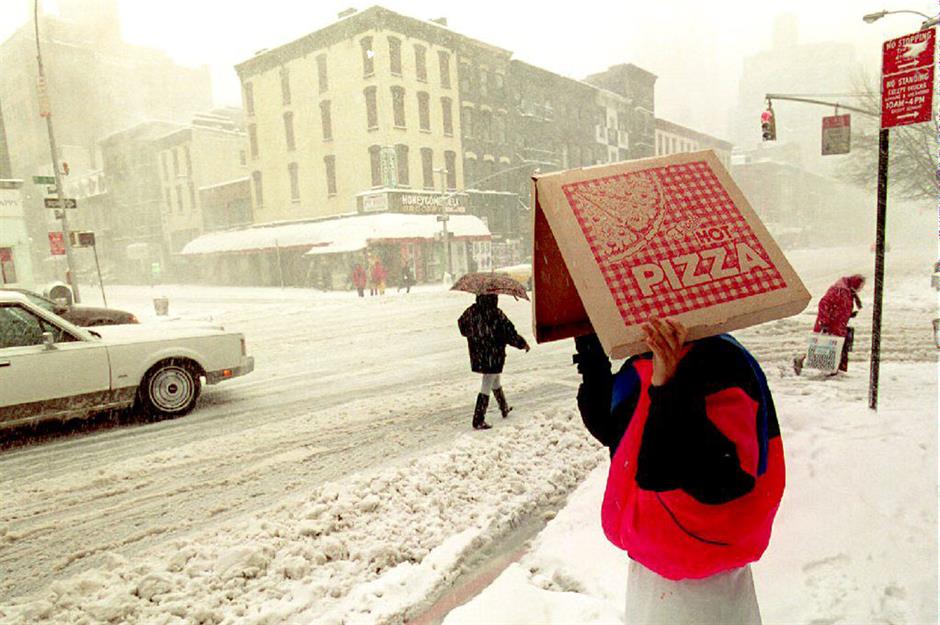
Also known as the Superstorm of 1993, the violent weather wreaked havoc as it moved up the eastern states from the Gulf of Mexico to Canada from 12-15 March. It's believed to still be one of the most costly weather events of the 20th century in the USA, with the damage thought to have been $5.5 billion ($9.9bn today).
1993: Storm of the century
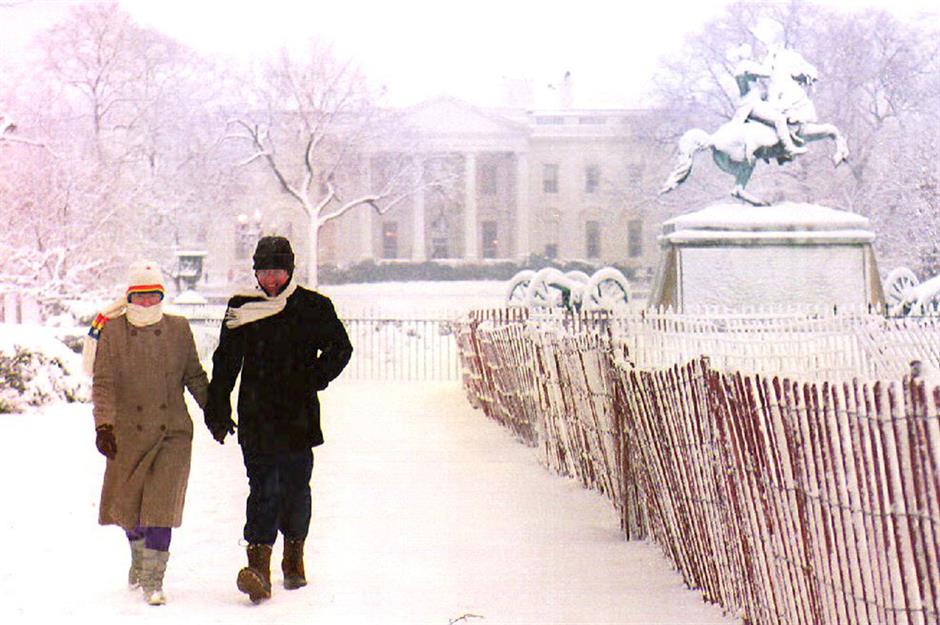
1996: North American blizzard
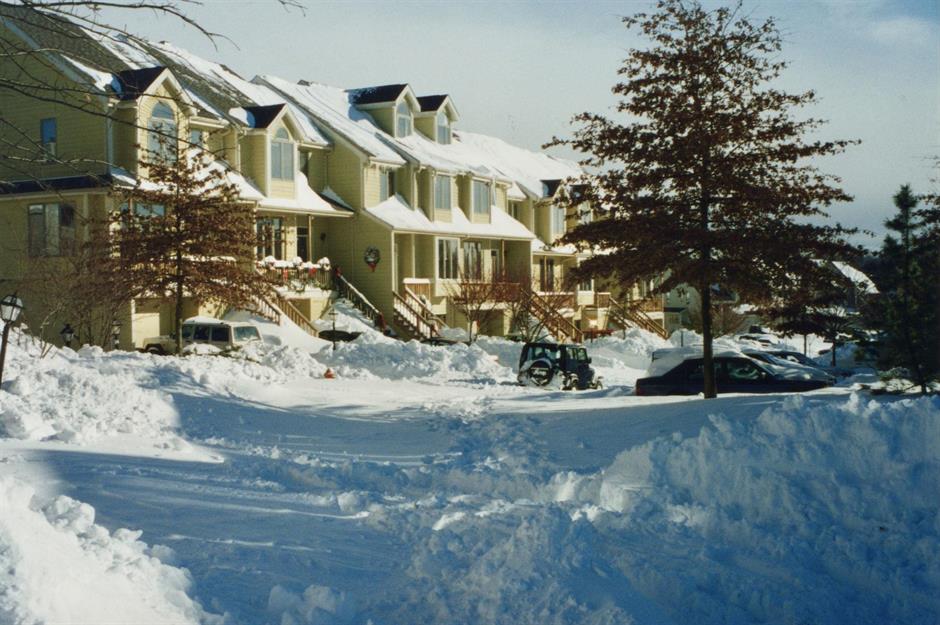
From 6-8 January one of the most devastating snowstorms struck the USA, with at least 60 people losing their lives. As the storm moved from city to city it broke records in Rhode Island, Philadelphia, Virginia and Providence, with snow reaching heights of up to four feet (1.2m) in some places. This photo shows a four-wheeled drive vehicle stranded in the snow in Baltimore, Maryland.
1996: North American blizzard
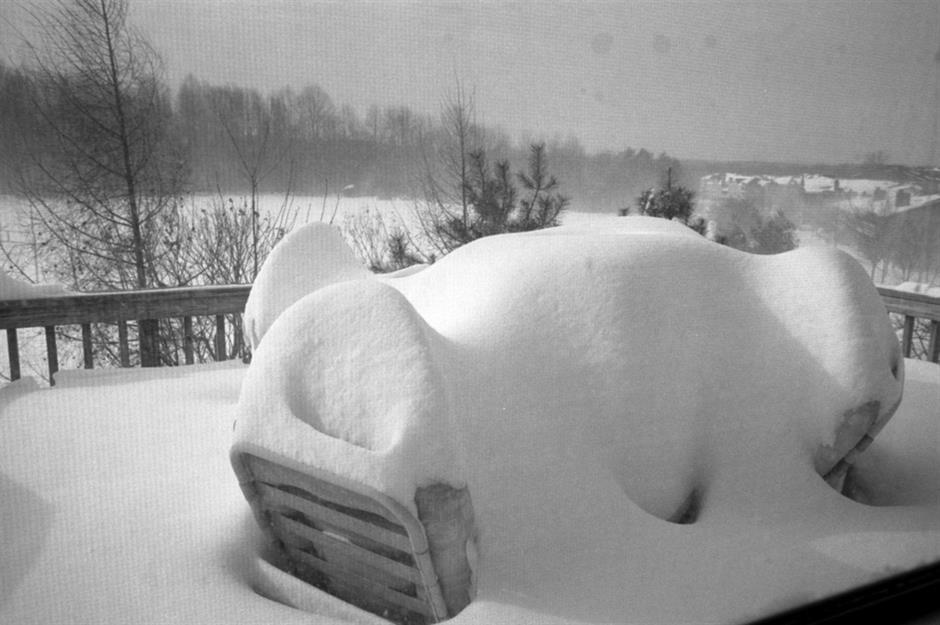
2003: Presidents' Day Storm
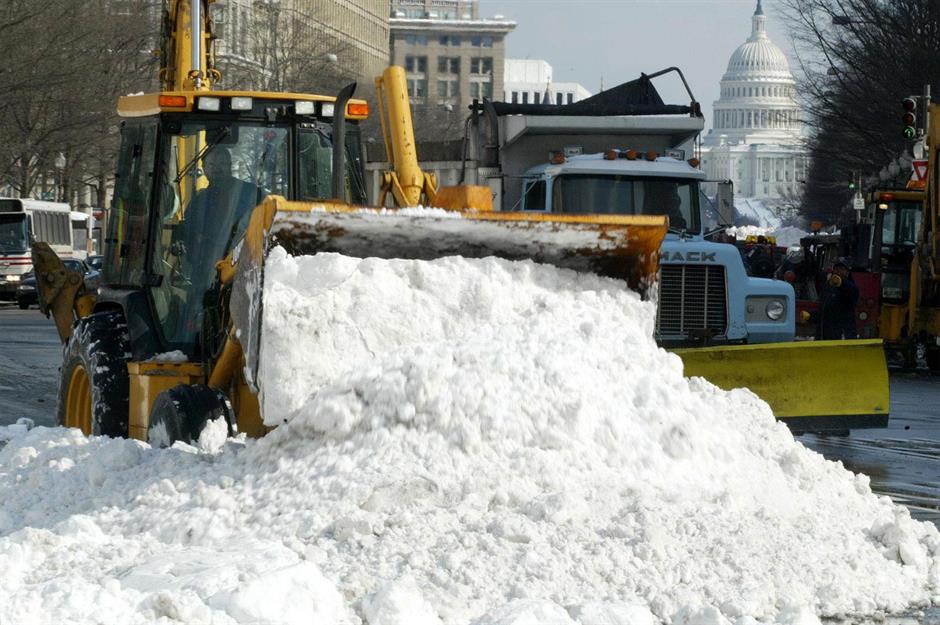
2003: Presidents' Day Storm
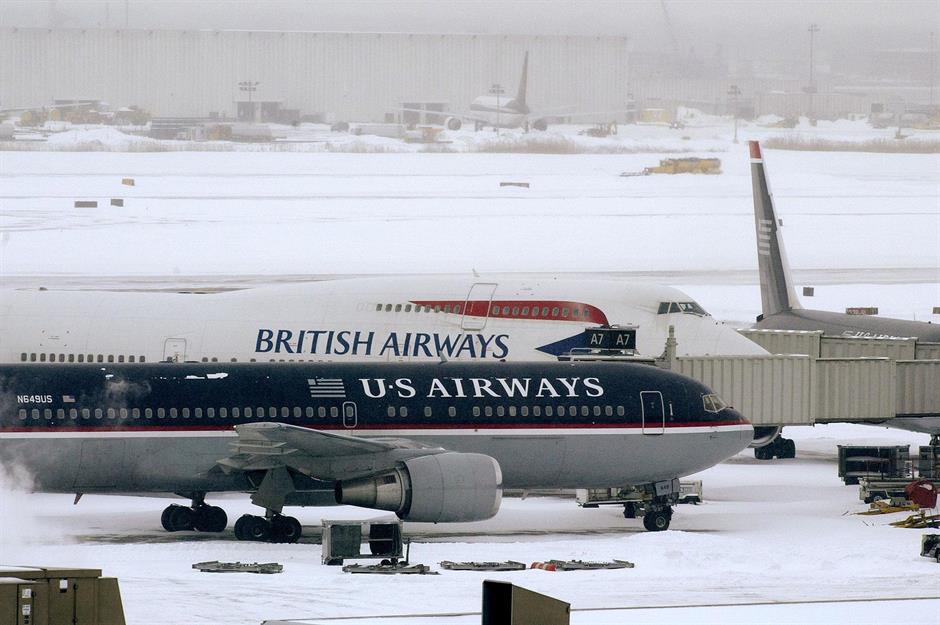
2005: Massachusetts blizzard
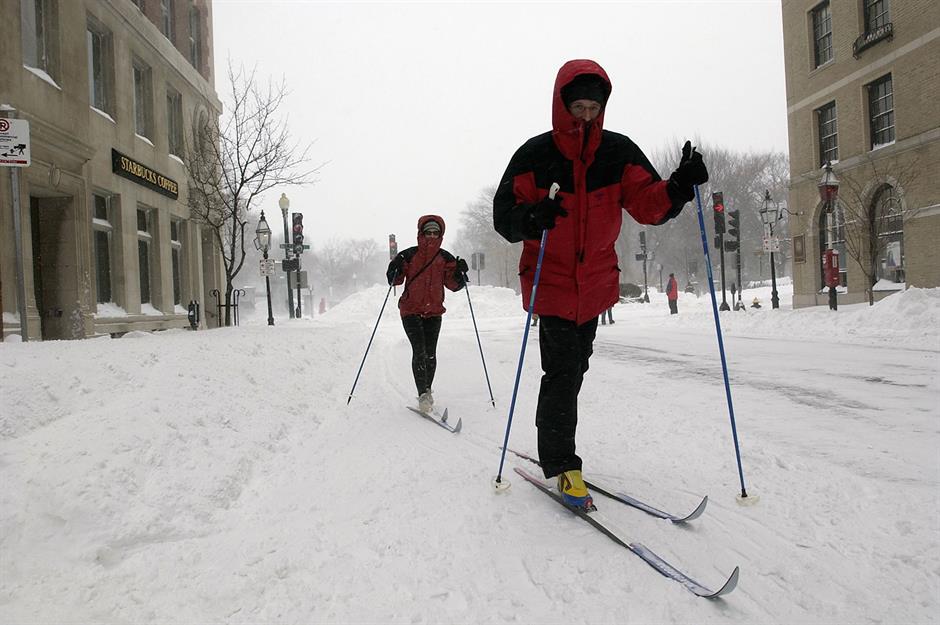
It's not often you can confidently ski through Boston city centre. However, the blizzard of 2005 hit much of Massachusetts hard, with 1ft 10in (0.5m) of snow falling in two days from 22-23 January. But with the bulk of the snow dump occurring over a weekend, many locals braved the cold to make the most of the pristine powder.
2005: Massachusetts blizzard
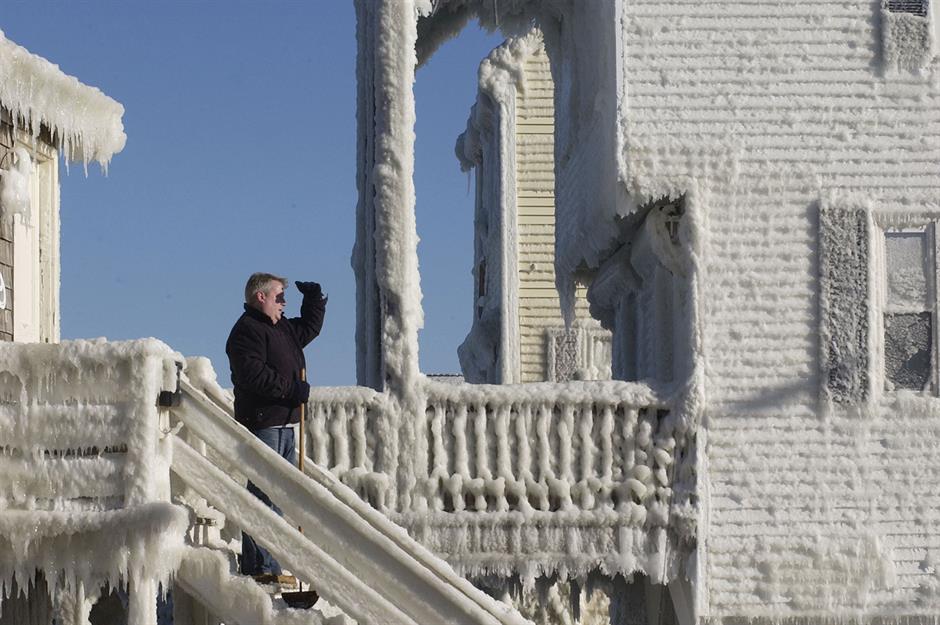
The hurricane-force winds that topped 80mph (129mh) whipped the snow up into towering drifts. Pictured here is a house in Hull, just south of Boston Harbor. Many homes suffered damage in the storm with thousands of properties around Cape Cod left without power.
2006: New York blizzard
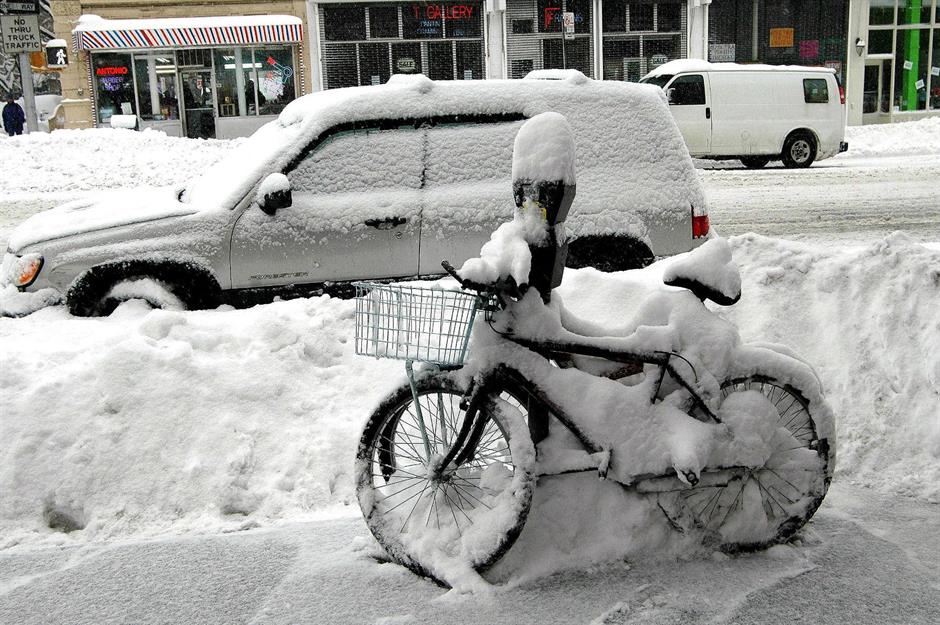
When the Big Apple was hit by a big dump of snow from 11-12 February 2006, it was the largest on record. The two days of appalling conditions saw New York enduring 'thundersnow', a lightning storm where the precipitation is snow rather than rain and a very rare weather event for the city.
2006: New York blizzard
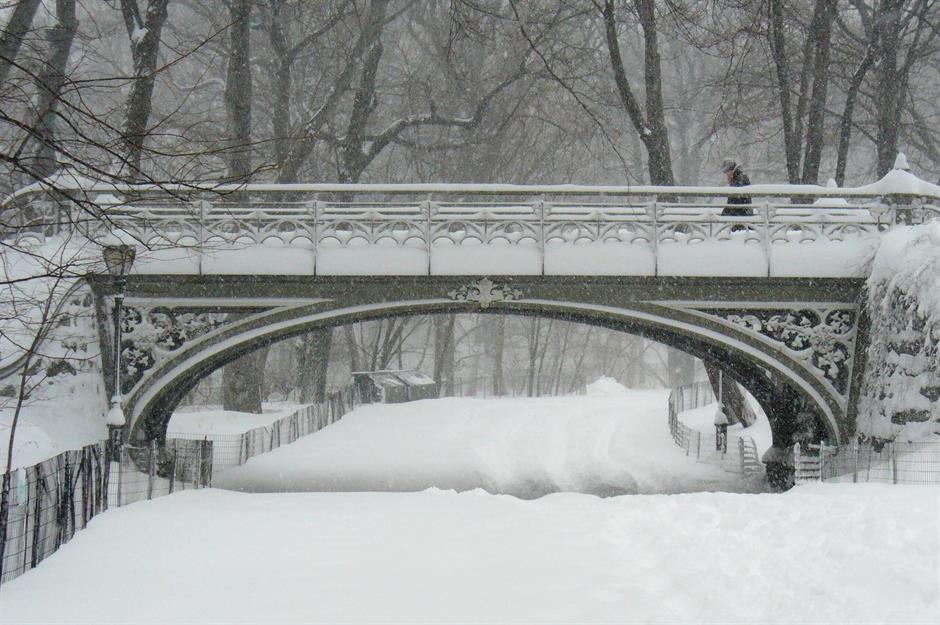
A total of 2ft 3in (0.7m) of snow fell in Central Park over a period of 16 hours. Three airports were closed and there were reports of thousands stranded.
2010: Snowmageddon
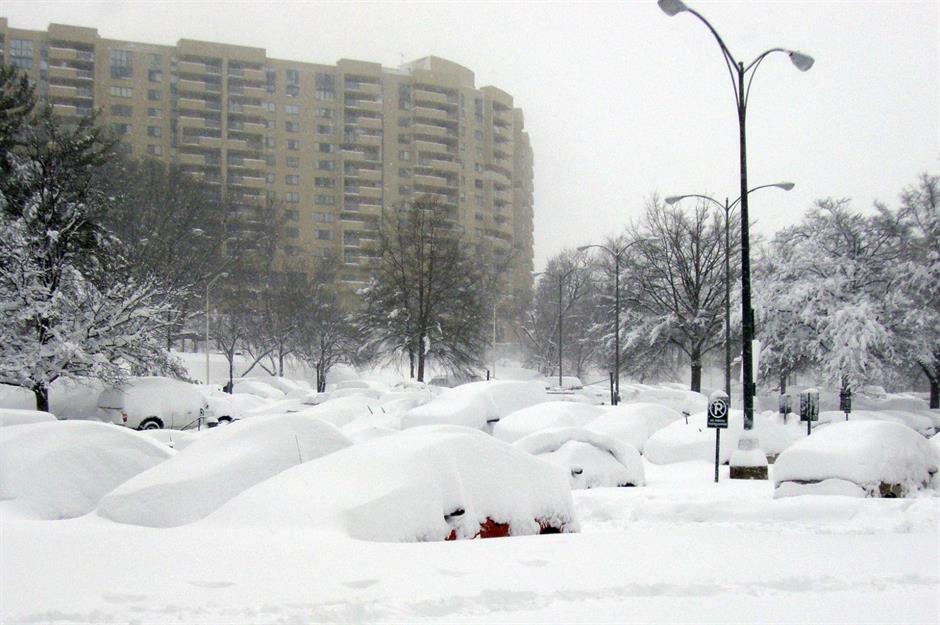
The blizzard of 5-6 February 2010, known as 'Snowmageddon', stretched from California to the East Coast, covering around 69% of the country in a thick blanket. Pictured here is a parking lot at Pentagon City, Arlington, Virginia.
2010: Snowmageddon

It was actually President Obama who dubbed the storm – which dumped up to 2ft 9in (0.8m) of snow in places such as Pennsylvania and Washington DC – as 'Snowmadgeddon'. The area was hit by a second blizzard known as ‘Snoverkill’ just five days later in what became Washington DC’s snowiest winter on record.
2010: post-Christmas blizzard
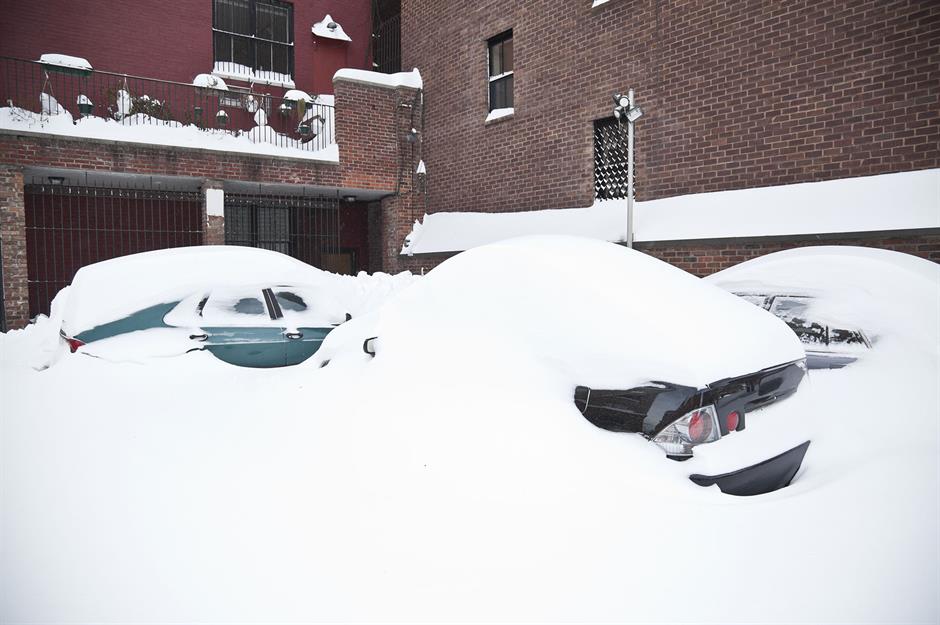
2010: post-Christmas blizzard
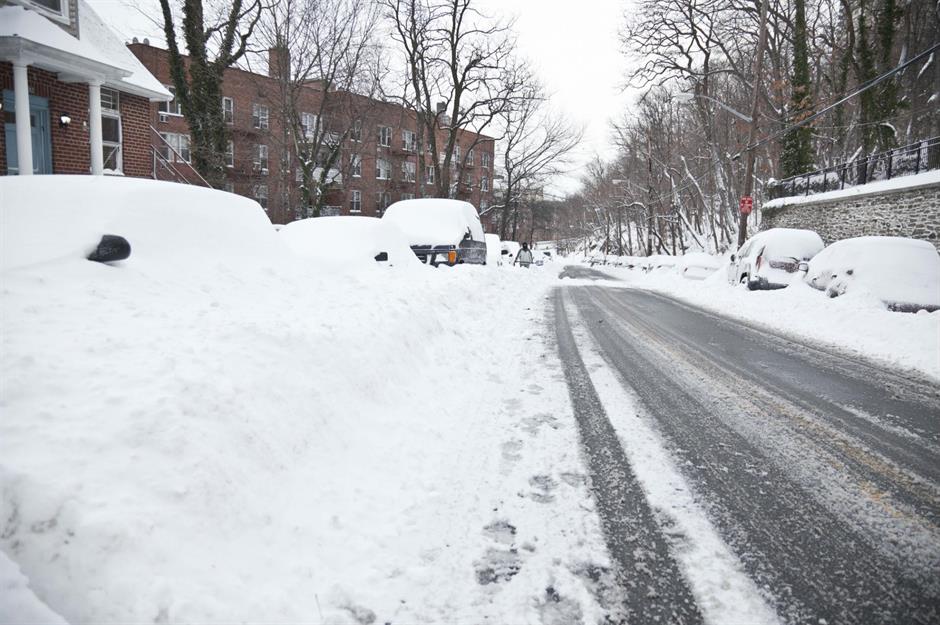
2011: Groundhog Day storm
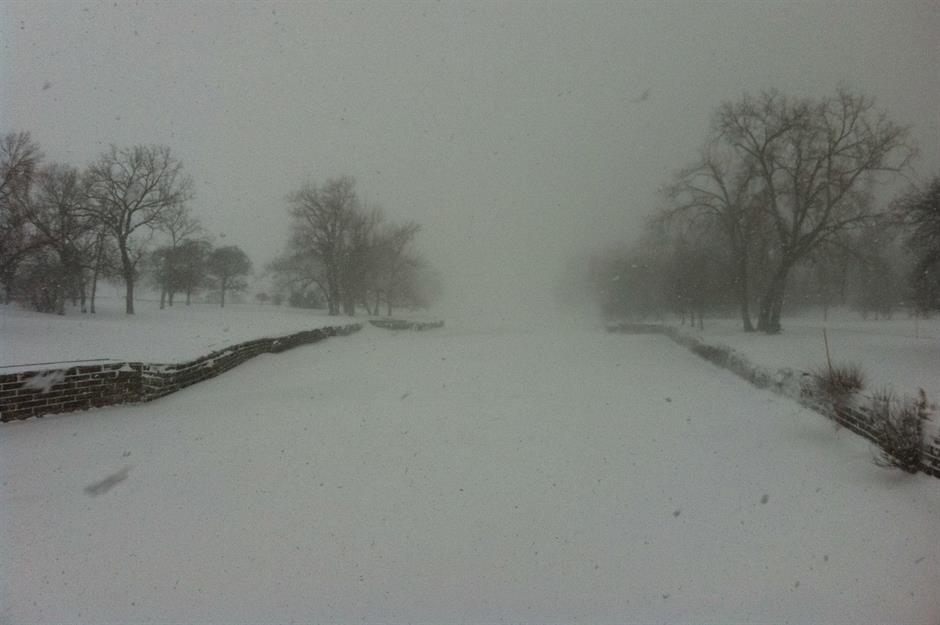
2011: Groundhog Day storm
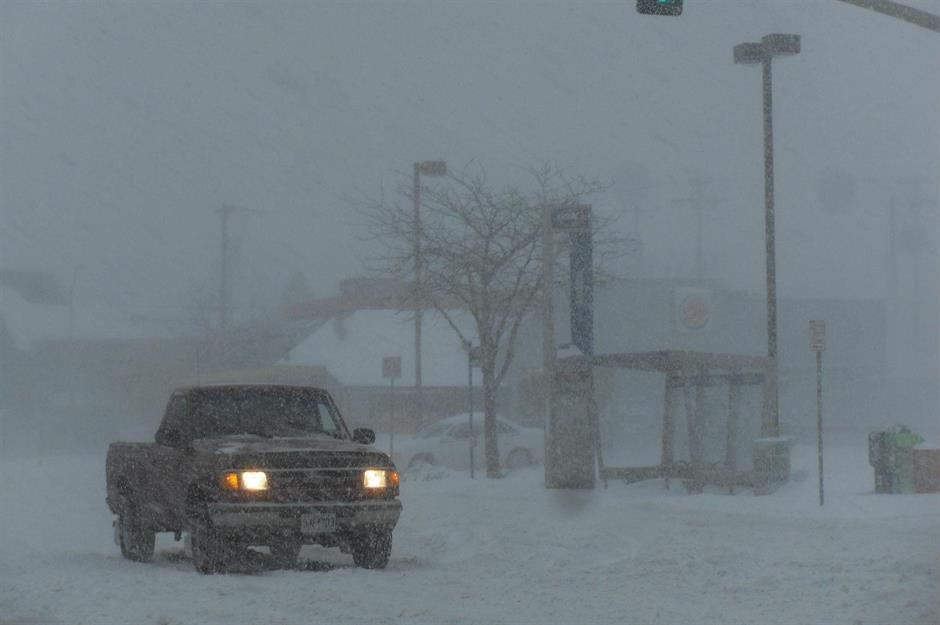
2014: Snowvember storm
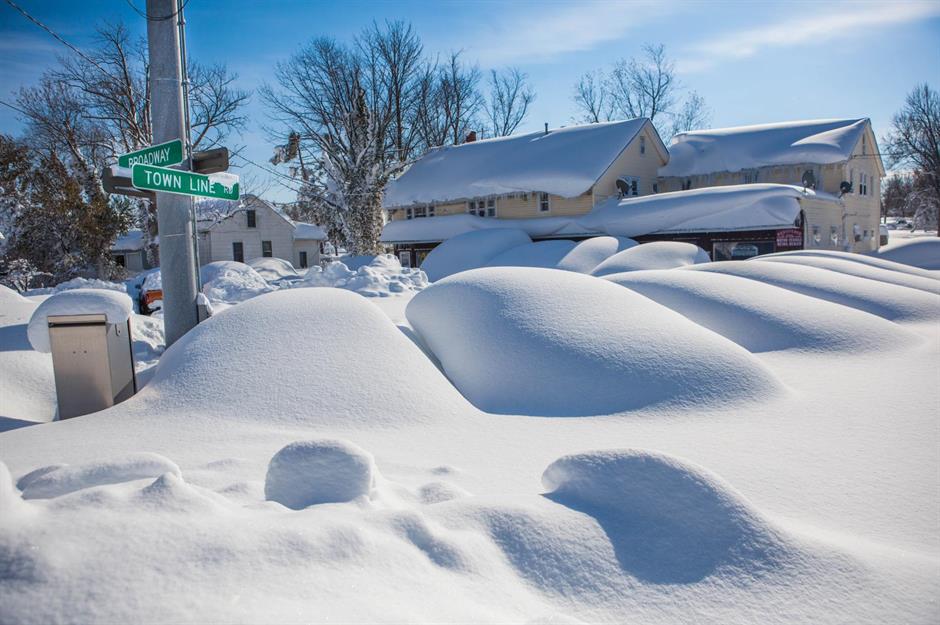
The whole country was watching Buffalo, New York, and its weather in 2014. The second-largest city in the state saw a total of seven feet (2.1m) of snow falling from 17-19 November due to two separate storms.
2014: Snowvember storm
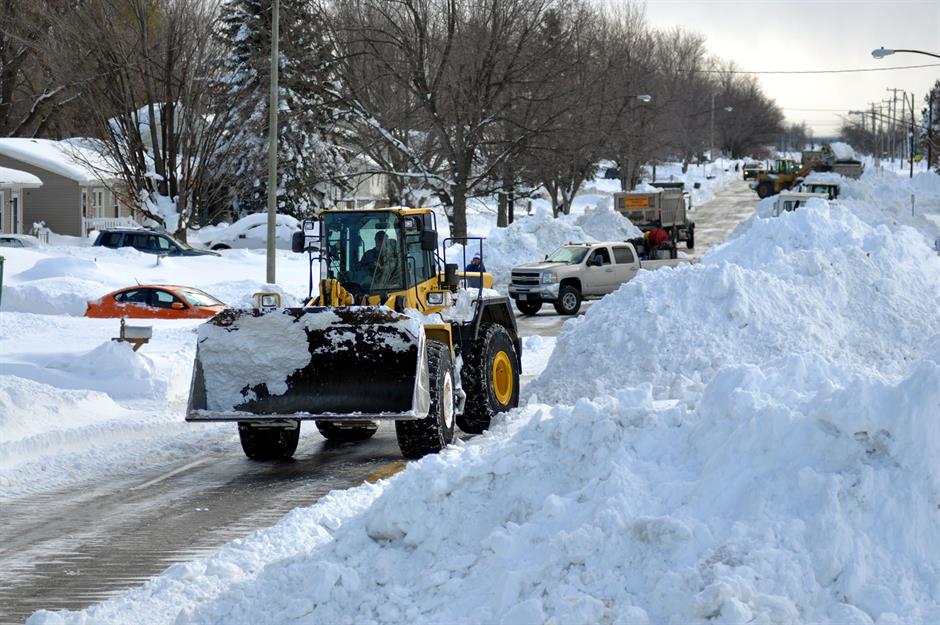
2016: Storm Jonas
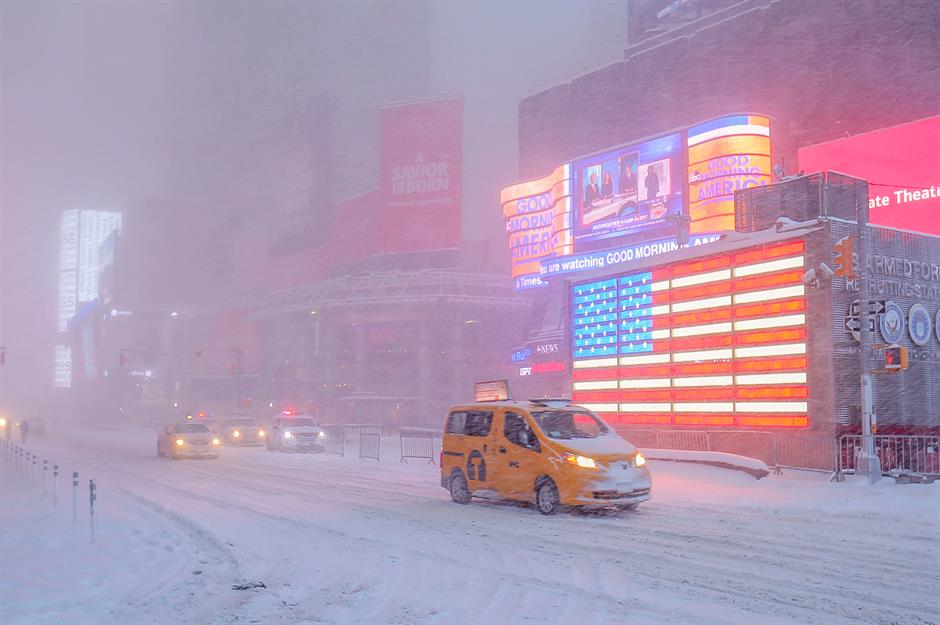
2016: Storm Jonas
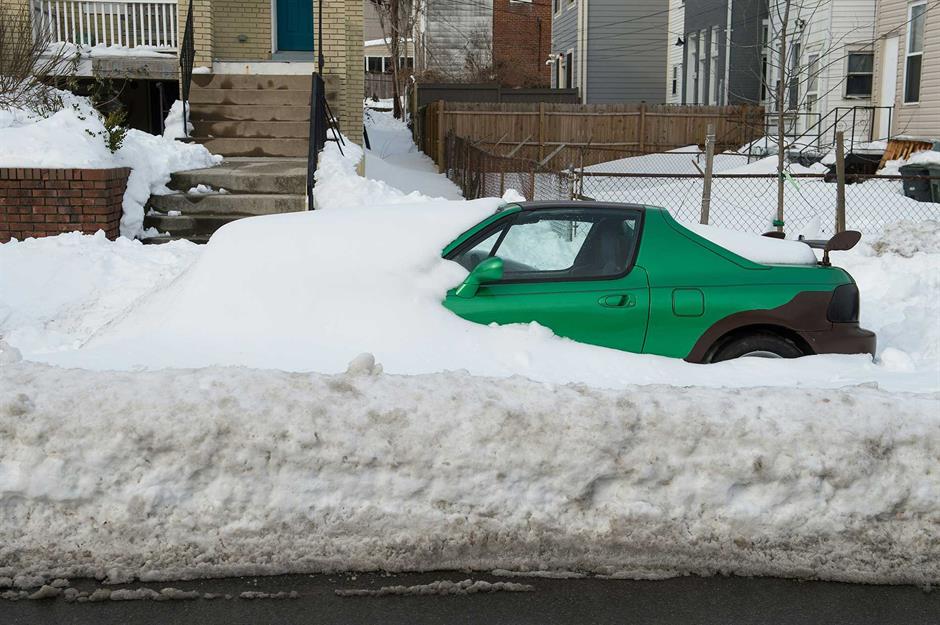
Three days after the storm passed, cars in Washington DC were still stuck. The storm caused over 50 deaths and a state of emergency was declared with travel bans put in place until the snow was cleared.
2018: 'bomb cyclone'
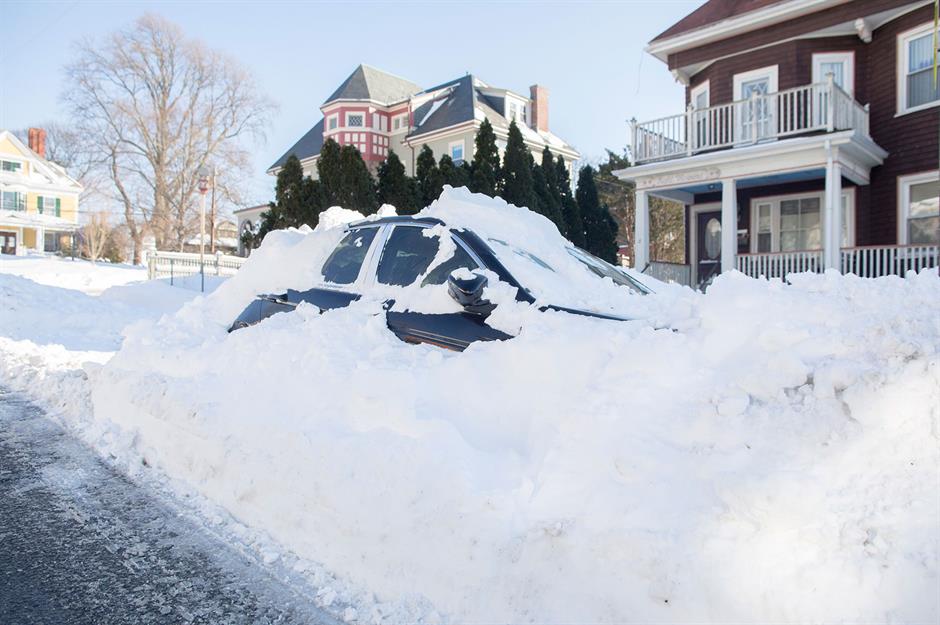
From 2-6 January 2018 a 'bomb cyclone' battered the northeastern states. As this snowed-in vehicle in the Dorchester neighbourhood shows, Boston was one of the worst-hit areas, with around one foot (0.3m) of snow falling.
2018: 'bomb cyclone'
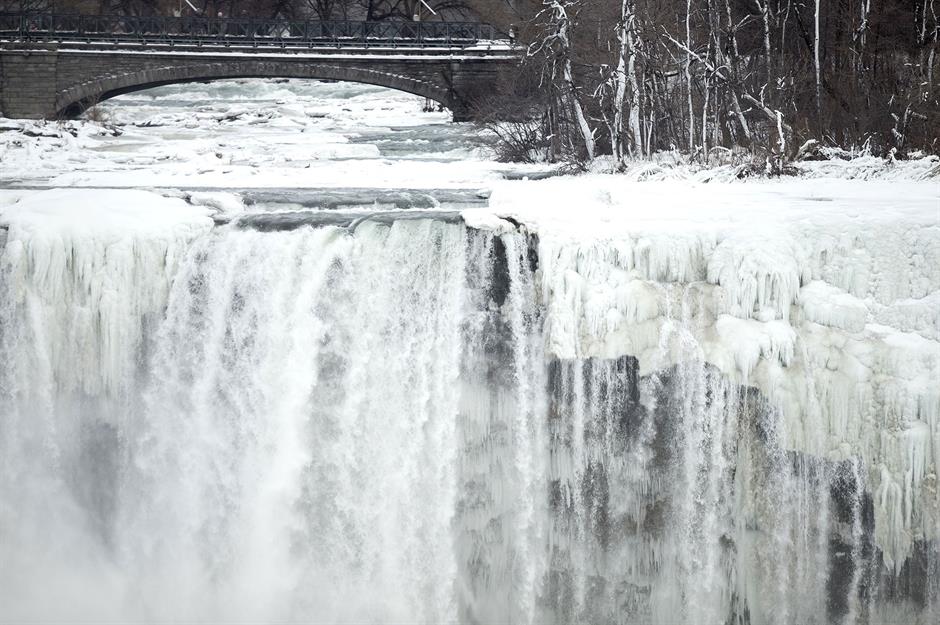
The fearsome and sudden storm caused Niagara Falls to appear as if frozen (although the water continued to flow underneath). High winds were also a problem, with the cruise ship Norwegian Breakaway sailing from the Bahamas to New York suffering severe flooding. The 'bomb cyclone' was the cause of 22 deaths.
2019: Polar Vortex
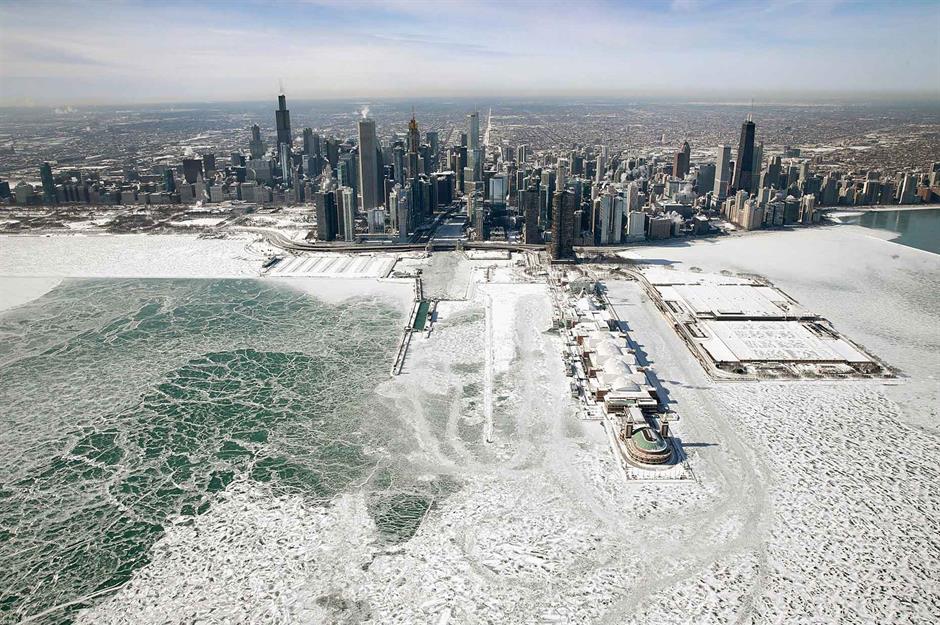
Arctic winds brought staggeringly low temperatures across the Midwest in January 2019, transforming Chicago into an icy wasteland. Temperatures dropped to a record-breaking minus -31°C (-23°F) and the mercury dropped so low that parts of the Chicago River froze over.
2019: Polar Vortex
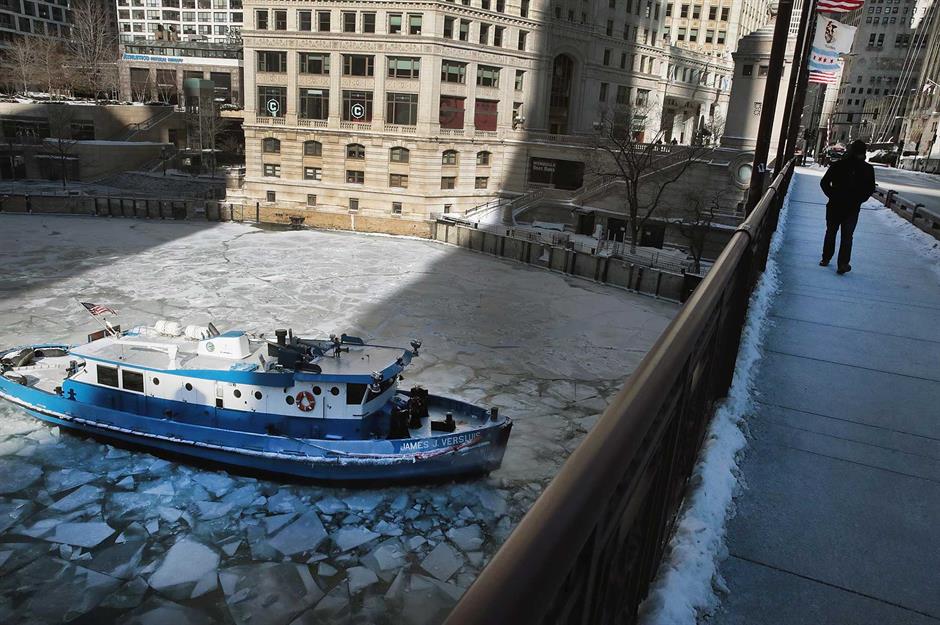
The weather was so bad that the Illinois governor declared a state of emergency due to the plummeting temperatures, which at times were colder than Antarctica. To keep the city's trains running gas fires were used on the rail tracks while those at home were requested to turn down their heating to conserve much-needed energy. However, it was those who were homeless or working outdoors that were hardest hit, with 21 fatalities and many others treated for frostbite.
2021: Snowstorm, southern and central states
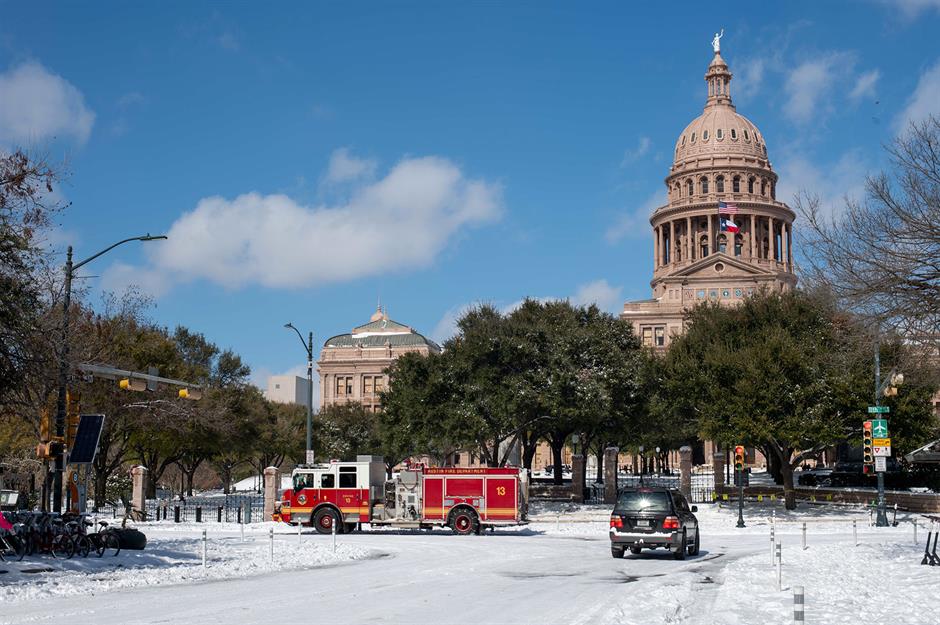
February 2021 brought some of the coldest temperatures to Texas for 30 years, as the mercury dropped to -18ºC (0ºF) on Valentine’s Day. The freezing weather resulted in at least 21 deaths reported across Texas, Louisiana, Kentucky, North Carolina and Missouri, but 100 million people were affected as snow covered over 70% of the US.
2021: Snowstorm, southern and central states
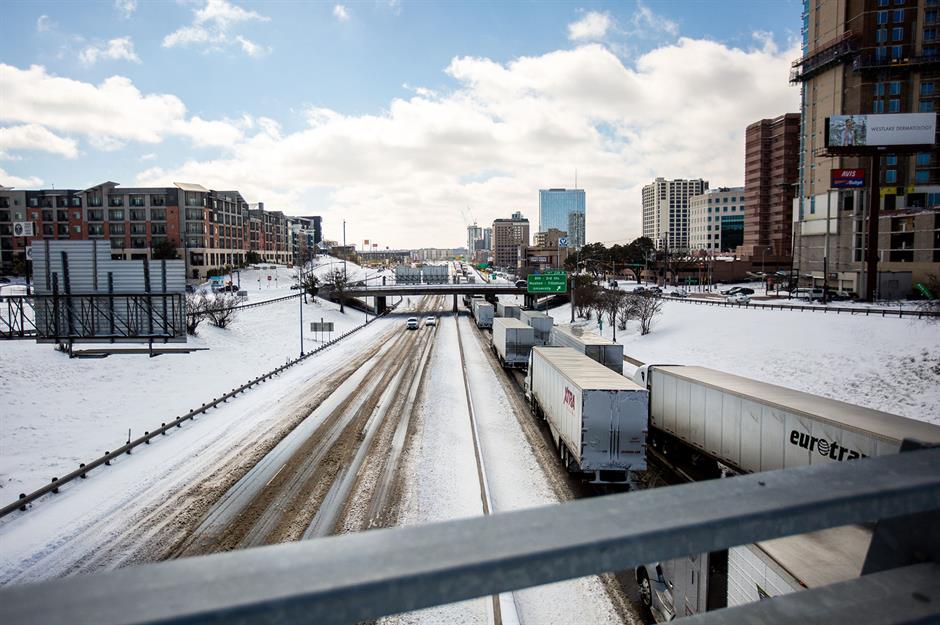
In Austin (pictured) the snowfall was around five inches (13cm) and caused more than just traffic jams. The low temperatures prompted a surge in power usage in the Lone Star State, that resulted in blackouts as the energy grid failed. Some of the deaths were caused by carbon monoxide poisoning due to people seeking alternative ways to stay warm, such as running cars or generators in homes and garages not built to retain heat.
2022: Snowstorm, eastern states
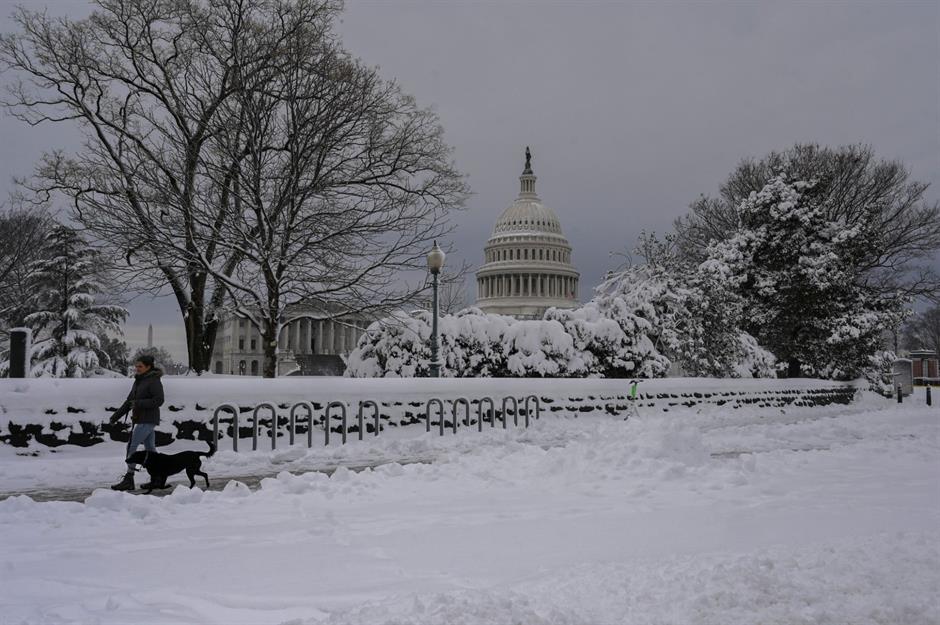
The new year brought a new winter storm to the eastern states, which saw record-breaking snow fall in Washington DC. The capital was hit with 8.5 inches (22cm) of the white stuff on 3 January, the most it's seen since the same time in 2016. Two children were killed after trees were uprooted and fell on houses, while hundreds of thousands of people were left without power across the East Coast.
2022: Snowstorm, eastern states
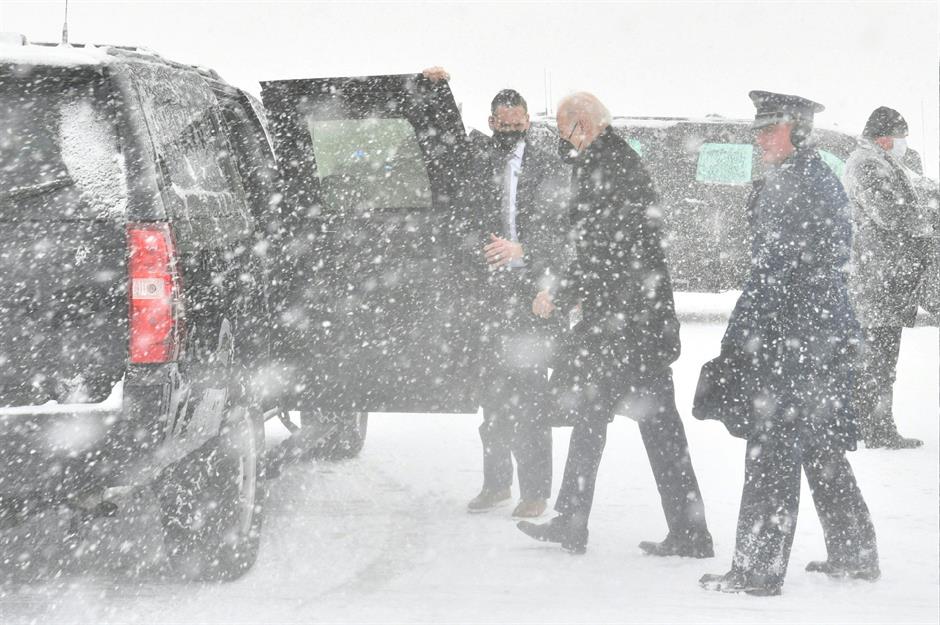
2022: Snowstorm, Pacific Northwest
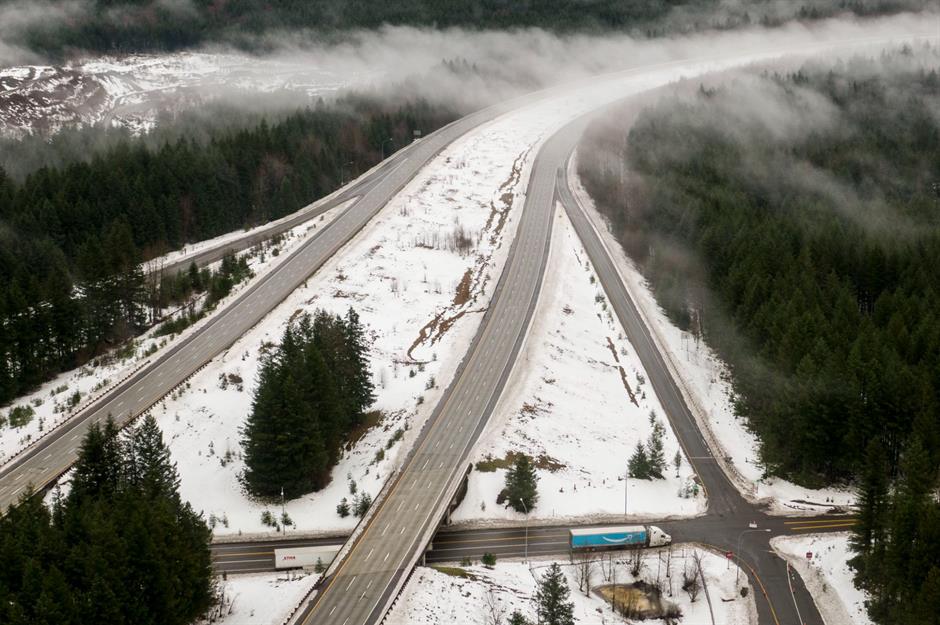
The West Coast has been hit hard by both heavy rain and snowstorms in the first weeks of January 2022. A whiteout on 7 January forced Interstate 90 (pictured) over the Snoqualmie Pass to close for nearly four days. Heavy snow – two feet (0.6m) fell in just over 24 hours – caused a whopping 38 avalanches, which made the pass too dangerous for general traffic, with only freight vehicles able to travel first when it finally reopened on 9 January. There was further bad news for the region when a house in the Magnolia neighbourhood of Seattle partially collapsed, sliding 15 feet (4.5m) down a steep slope during a landslide caused by recording-breaking rain.
Comments
Do you want to comment on this article? You need to be signed in for this feature